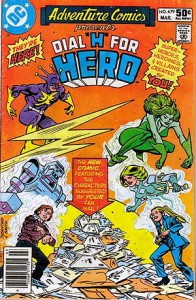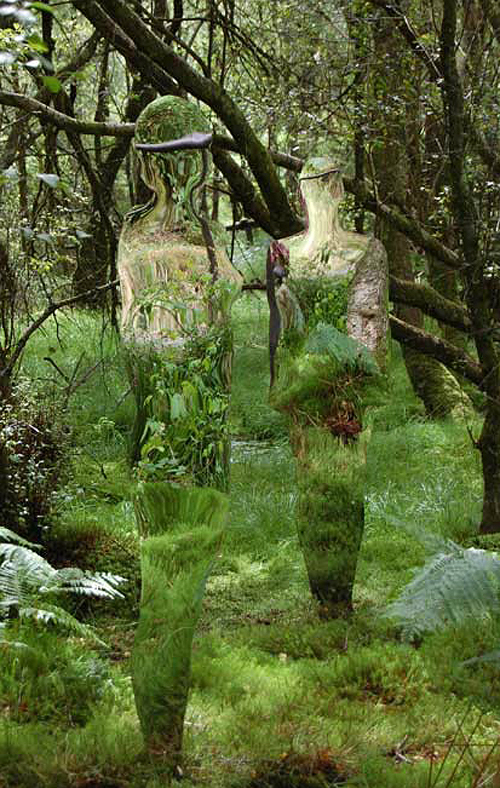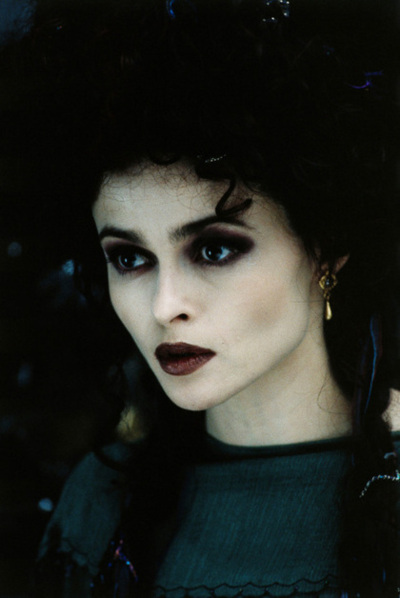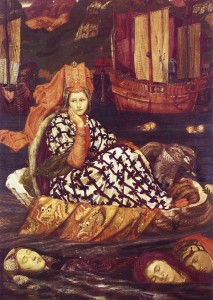 Here are some shiny things that caught my eye recently:
Here are some shiny things that caught my eye recently:
♦ Whoa:
Rob Mulholland created this installation to explore “the essence of who we are as individuals in relationship to others and our given environment.” These mirrored figures (six in all, male and female) reflect the forest around them and each other, connecting everything. Via.
 ♦ The card catalog cabinet, though not likely not be found in libraries anymore, has found a new life as clever storage for book-loving folks. Rachel at Small Notebook revived a card catalog file into a really cool organizer for everything: ribbon, cloth napkins, desk supplies, flashlights, tealights, wine, batteries, glue, etc. Click through to see the card catalog file as well as other drawers. (Via) A few years ago I bought a CD storage cabinet that looks like a card catalog, but I’d certainly go for another card catalog organizer any day of the week!
♦ The card catalog cabinet, though not likely not be found in libraries anymore, has found a new life as clever storage for book-loving folks. Rachel at Small Notebook revived a card catalog file into a really cool organizer for everything: ribbon, cloth napkins, desk supplies, flashlights, tealights, wine, batteries, glue, etc. Click through to see the card catalog file as well as other drawers. (Via) A few years ago I bought a CD storage cabinet that looks like a card catalog, but I’d certainly go for another card catalog organizer any day of the week!
♦ From card catalogs to celebrity libraries: Wallace Yovetich has started a series at BookRiot on Libraries of the Rich and Famous. As you would expect, opulence at every turn, and so many books! For a teaser, I offer William Randolph Hearst’s library:
While we’re talking about libraries, American Libraries has a great interview with Jeanette Winterson about, well, libraries (they certainly weren’t going to ask her about crepes). She has 10,000 books in her private library (swoon!). This is the life:
Every year, during the week between Christmas and New Year’s, my girlfriend goes away for the sun, which I hate, so I stay at home. All I do every night, I light the fire in my library and I go up there about 6 o’clock and will be there until maybe 12 or 1 in the morning. The whole point is to spend time with those books. I rearrange some of them. I play with them. I say, “I haven’t seen this for years!” I really will spend seven or eight hours in that week organizing and rereading. It makes me so happy, because now that I’m 50, it is a life in books. There’s great pleasure in that.
I’m very happy there. Some people are happy when they are at the sea; I’m happy when I’m standing in front of a shelf of books. It feels like the known place and also the beginning of a new adventure. It has that simultaneous paradoxical effect of making me feel absolutely calm and very excited.
Via.
♦ Book Nook. I would read a book in a nook with a crook wielding a hook.
The Palencar Project, March 14th: “Thanatos Beach” by James Morrow
If you’ve a hankering for some critical works, check out Jennifer Miller’s essay, “Living Below and Between: Interstitiality and Neil Gaiman’s Neverwhere” at Interfictions Zero.
 io9 has a great interview with China Miéville about his upcoming run on Dial H for Hero (from DC Comics), to which he’s given a horror twist. I was a fan of the second run of the concept in the ’80s, and I’m definitely going to check out what Miéville does with the concept. It’s interesting to see writers take superheroes (like Brian Azzarello with Wonder Woman) in the horror direction—so many interesting ideas to explore when those two genres abut.
io9 has a great interview with China Miéville about his upcoming run on Dial H for Hero (from DC Comics), to which he’s given a horror twist. I was a fan of the second run of the concept in the ’80s, and I’m definitely going to check out what Miéville does with the concept. It’s interesting to see writers take superheroes (like Brian Azzarello with Wonder Woman) in the horror direction—so many interesting ideas to explore when those two genres abut.
This article from The New York Times has shown up in quite a few familiar places today: Annie Murphy Paul on The Neuroscience of Your Brain on Fiction. Here are a couple of jolts in the brain for you (but, really, go read the article; it’s fascinating):
Brain scans are revealing what happens in our heads when we read a detailed description, an evocative metaphor or an emotional exchange between characters. Stories, this research is showing, stimulate the brain and even change how we act in life…. The brain, it seems, does not make much of a distinction between reading about an experience and encountering it in real life; in each case, the same neurological regions are stimulated. Keith Oatley, an emeritus professor of cognitive psychology at the University of Toronto (and a published novelist), has proposed that reading produces a vivid simulation of reality, one that “runs on minds of readers just as computer simulations run on computers.” Fiction — with its redolent details, imaginative metaphors and attentive descriptions of people and their actions — offers an especially rich replica. Indeed, in one respect novels go beyond simulating reality to give readers an experience unavailable off the page: the opportunity to enter fully into other people’s thoughts and feelings.
To celebrate the upcoming International Conference on the Fantastic in the Arts, Weird Fiction Review offers Twelve Days of Monsters with each day full of fiction, essays, interviews, and art about monsters. The link includes a line-up, but be sure to check out A Brief History of Monsters by Theodora Goss.
♦ Say what you will about the state of Helena Bonham Carter’s current acting approach, but you can’t deny the moody and moving beauty of this photograph. I don’t know the photographer is (which is a shame because I’d love to see more of her/his work), but I found this image on The Hanging Garden tumblr.
♦ I recently picked up a copy of Fantasy Art Now, and I’m glad I did as found Italian artist Alessandro Bavari in it. His work is often dark but also full of vitality (I don’t know how to describe it better than that, so check out his site for yourself—although be warned about the artistic nudity). Here’s one of Bavari’s images I find appealing (some of the others that speak to me I’m saving for another post):
♦ Writers’ Corner. In case, you know, writers are reading this post.
Nick Ripatrazone has an interesting article at The Millions titled “On Getting Paid: Literary Magazines and Remuneration” (via). If you’re a writer interested in submitting to literary journals, you’ll want to read the article. Here’s a teaser:
Other than a few and often notable distinctions, the economy of literary magazines appears to be a closed system: writers publish in literary magazines that are often read by writers. Money is tight, payment is low, and subscriptions and institutional support appear to be the final hope for sustenance. Does it have to be that way?
A constant dilemma for any artist is making time for the art without alienating the support system of family and friends. But to make art you must make time, and Elizabeth Spann Craig has some suggestions for protecting our writing time (applicable to other types of artists as well). Elizabeth also wrote about her own editing process this week.
Neil Gaiman re-posted (re-blogged? re-tumbld?) John Steinbeck’s six writing tips on his tumblr this week. My favorite? Number three:
Forget your generalized audience. In the first place, the nameless, faceless audience will scare you to death and in the second place, unlike the theater, it doesn’t exist. In writing, your audience is one single reader. I have found that sometimes it helps to pick out one person—a real person you know, or an imagined person and write to that one.
Chuck Wendig’s at it again with two good posts for writers this week: 25 things you should know about creativity and Shot through the Heart: Your Story’s Throughline.
Did you know that creativity is more like expertise than intelligence? Dr. John Baer breaks it down at The Creativity Post. Via.
Jane Yolen writes, “In essence, even though copyeditors and techies love this new toy, I think [Track Changes] is counter-intuitive for the creating artist.” Click through to find out why. I’ve used Track Changes on students’ academic essays, but I’ve never tried it with creative work, probably because I don’t think I’d like to read that way (I’d have to print it out, which kind of defeats the point).
Linked short-story collections have become all the literary rage lately, according to Kit Steinkellner at BookRiot. This concept—a collection of short stories about the same characters—has been around for a long time, as Steinkellner notes, certainly as early as the Arthurian legend compilations by Chretien de Troyes and Sir Thomas Malory, and Sherwood Anderson’s Winesburg, Ohio often gets cited as an early example in the 20th century. Genre writers have been doing it for ages, too (I can think of Charles de Lint, Christopher Barzak, and Mercedes Lackey off the top of my head). Steinkellner cites Jennifer Egan‘s A Visit from the Goon Squad, which I recently bought because I’d read the exquisite “Out of Body”—one of the stories in A Visit from the Goon Squad—for class. Seriously, people, go read “Out of Body” right now: it just about blew the top off my head, it’s that good.
Charlie Jane Anders has some advice on how not to be a clever writer.
♦ For CBC and all the other Raymond Carver fans out there, a poem (read by Alessio Morglia and animated by Alessandro Ferraro):
Via.
♦ In the category of cute: Lauren Faust has animated Super Best Friends Forever, part of the DC Nation Shorts that run on Cartoon Network’s Saturday morning block of DC animated shows Green Lantern and Young Justice. Here’s the first episode:









